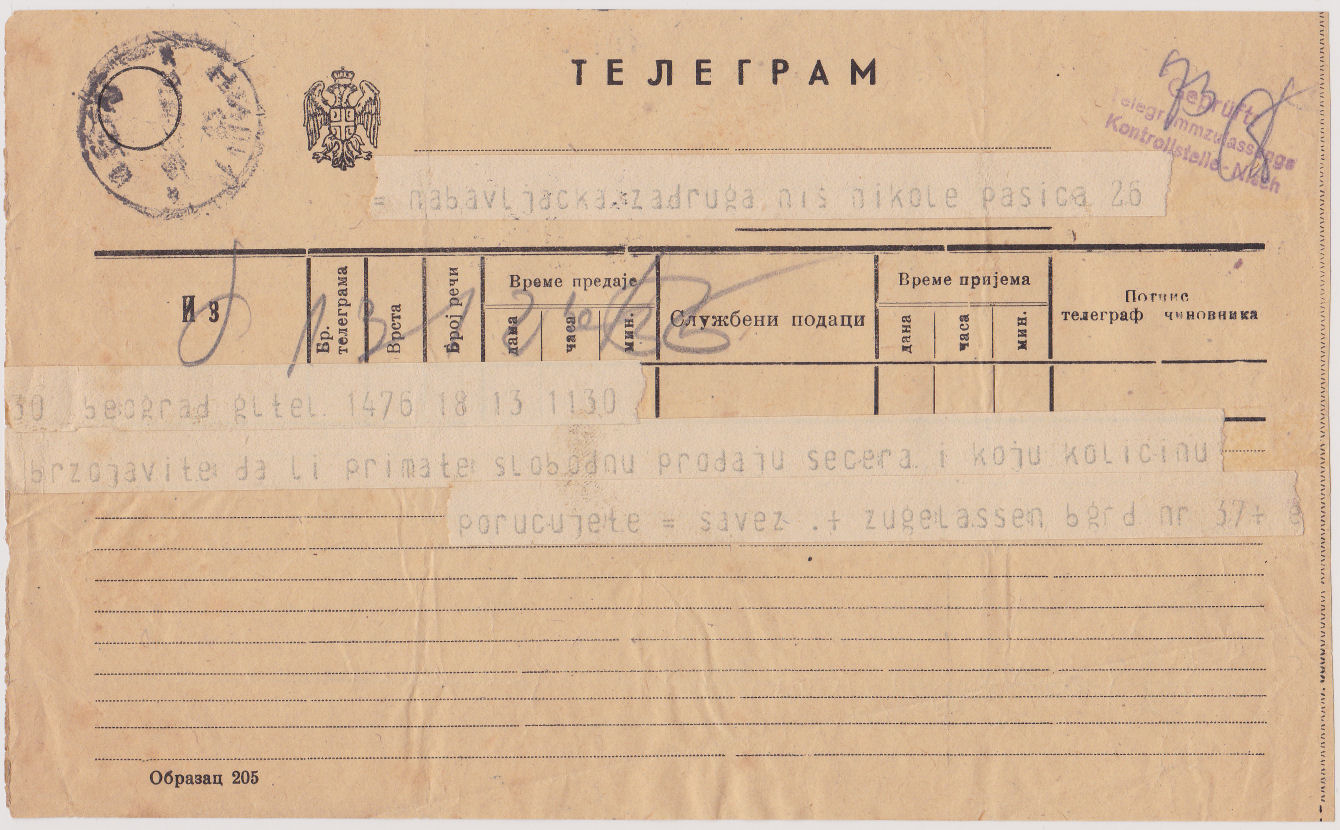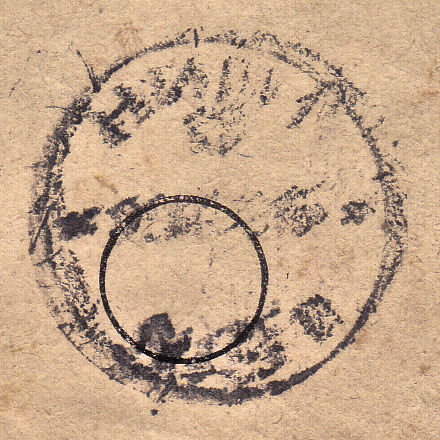SERBIA
In addition to the three Serbian seals shown below, half of a small blue scalloped seal depicting a double-headed
eagle is illustrated in a Greek auction catalogue and described as having been used in 1913.
| Updates. The above was written by Steve Hiscocks. I will take Serbia as having independent seals from 1830 until 1918 when it became part of Yugoslavia. Serbia was instrumental in creating Yugoslavia and was the largest ethnic group within it. In 2003 the State Union of Serbia and Montenegro was formed from (what was left of) Yugoslavia. This was renamed Serbia in 2006 when Montenegro became independent. Since #3 said Jugoslavia on it, I have moved it to Jugoslavia. Capital Belgrade. Re-arranged, no pricing as yet. |
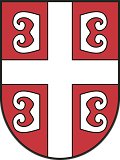 |
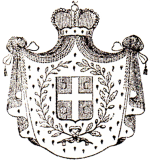 |
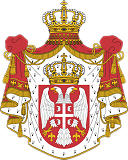 |
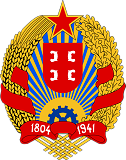 |
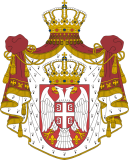 |
| From ancient times, Cross of Serbia. |
1817-1882 Principality of Serbia |
1882-1918 Kindom of Serbia |
1943-92 Soc. Rep. of Serbia |
2004 onwards Republic of Serbia |
According to Wikipedia the current arms of Serbia is virtually identical to the one they show for the earlier Kingdom of Serbia.
I suspect that this is a mistake as I would not expect to see crowns on the Arms of a Republic.
For items used in this geographic area during the gap between 1918 and 1943, see under Jugoslavia.
According to the Britannica.com, the white marks on the shield are actually meant to be four Cyrillic C letters.
They go on to say that they are thought to stand for "Samo sloga Srbina spasava" (“Only unity will save the Serbs”).
КРАЉЕВСКО СРПСКИ ТЕЛЕГРАФ = ROYAL SERBIAN TELEGRAPH
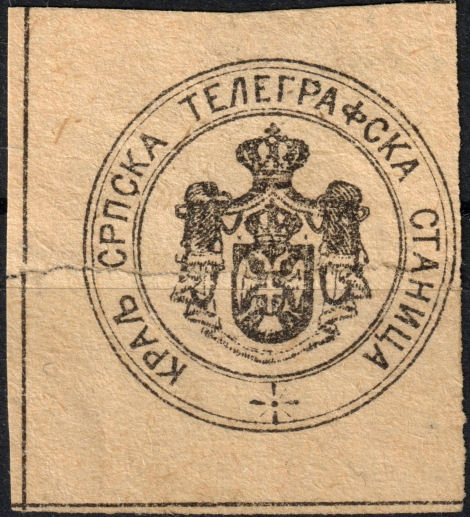 |
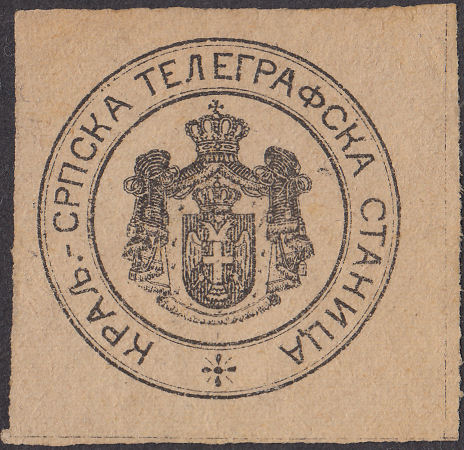 |
| #1 1890?, size ? ТЕЛЕГРАФСКА СТАНИЦА = TELEGRAPH STATION |
#2 1894-8, 30.8mm ТЕЛЕГРАФСКА СТАНИЦА = TELEGRAPH STATION |
I am unsure of the size and date of the (new) first item.
It lacks the period and hyphen after "КРАЉ", as well as having a generally 'rough' appearance compared to the re-drawn, presumably later type.
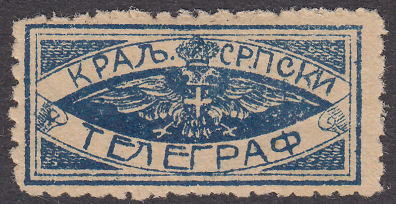 |
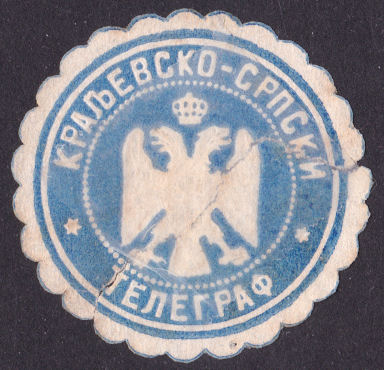 |
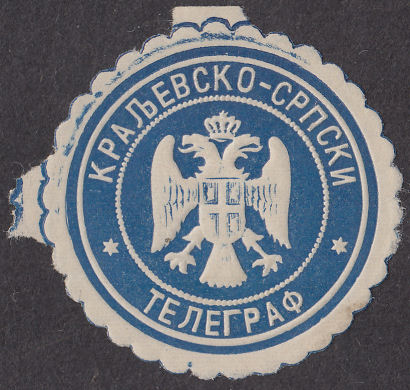 |
| #3 28.5mm 'КРАЉ.' short for 'КРАЉЕВСКО' |
#4 Date?, 26.4mm | #5 1911, 26.5mm |
| Possibly these are the ones referred to by Hiscocks at the beginning. КРАЉЕВСКО СРПСКИ = ROYAL SERBIAN These differ in the thickness of lettering, crown, claws and scalloping. |
||
| RH # | Type. | was | Description | Mint | Used | On telegram |
|---|---|---|---|---|---|---|
| RH1 | 1 | - | 1890?, Imperf. Black on white. Arms of Serbia. | - | - | - |
| RH2 | 1 | #2 | 1894-8, Imperf. Black on white. Arms of Serbia. | - | - | - |
| RH3 | 2 | #1 | Perf. 11½. Blue on white. | - | - | - |
| - | #3 | Moved to Yugoslavia | - | - | - | |
| RH4 | 3 | - | Date? Scalloped (27). Blue on white. | - | - | - |
| RH5 | 4 | - | 1911. Scalloped (33 and 34 seen). Blue on white. | - | - | - |
TELEGRAMS
Here is a selection of telegrams used.
My earliest is headed КНЯЖ. СРБСКО ТЕЛЕГРАФСКО НАДЛЕЖАТЕЛСТВО. (КНЯЖ. is an abbreviation of КНЯЖЕСВО, so this is PRINCIPALITY OF SERBIAN TELEGRAPH AUTHORITY.)
Underneath that is "No.____ Д.____ O∂ъ Кпяж. Срб. телеϩрафске штацiε у____" (From the Serbian Telegraph Station___ )
Note here that some now-obsolete lower-case characters are used on this. The lower-case Д is replaced by the Greek delta and the lower-case Г is replaced by an ϩ.
Also, Я, ъ and i, are no longer in the Serbian alphabet, so my translation might be a bit off.
Underneath that is ТЕЛЕГРАФСКА ДЕПЕША (Telegraph Dispatch). It is dated 18/11/1863 (Written digits '1' are given a dot over them throughout, perhaps a lower case Roman numeral I.)
Below that 19 Речi
Пре∂анa у = "Consigned at "; Приспела у Ваљево = "Arrived at Valjevo",
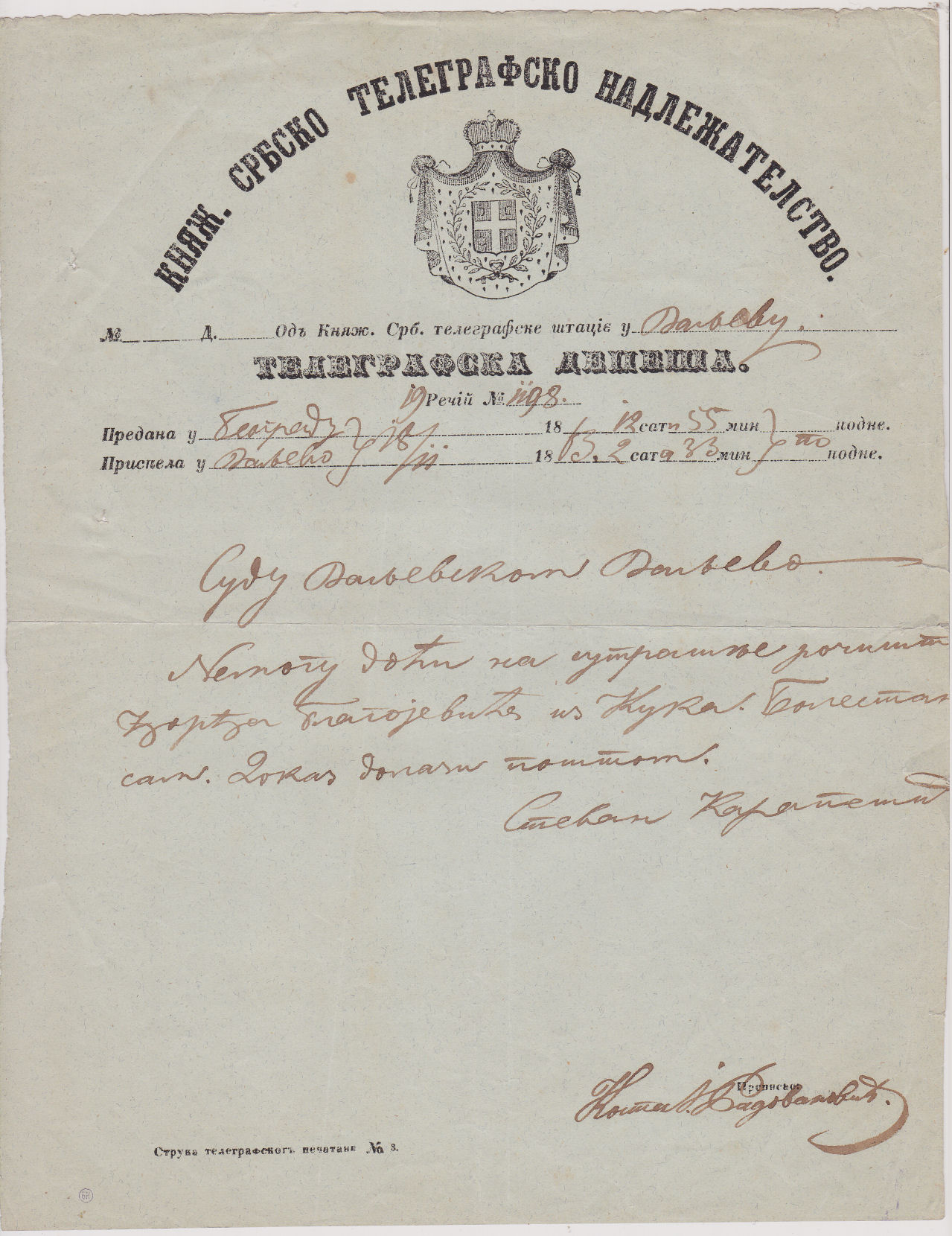
At the bottom-left it has "Струка телеграфскогъ печатаия No 3.", and bottom-right reads "Преписао:" (Transcribed:).
This appears to have been posted in an envelope as it has no sign of a seal.
This is a later one of 1866 courtesy of Zoran, Stepa on Delcampe
It has the top part filled in and looks slightly greenish, but is otherwise quite similar.
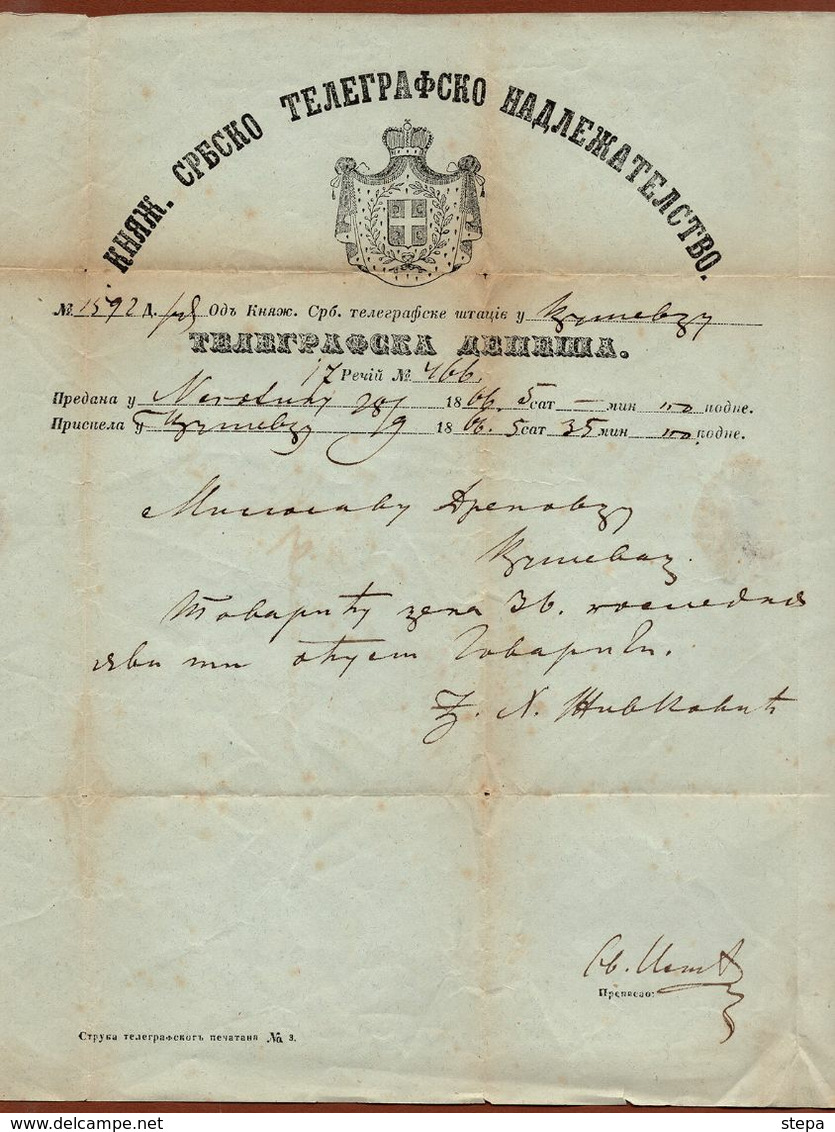
This one though, was folded and sealed with wax before being delivered:
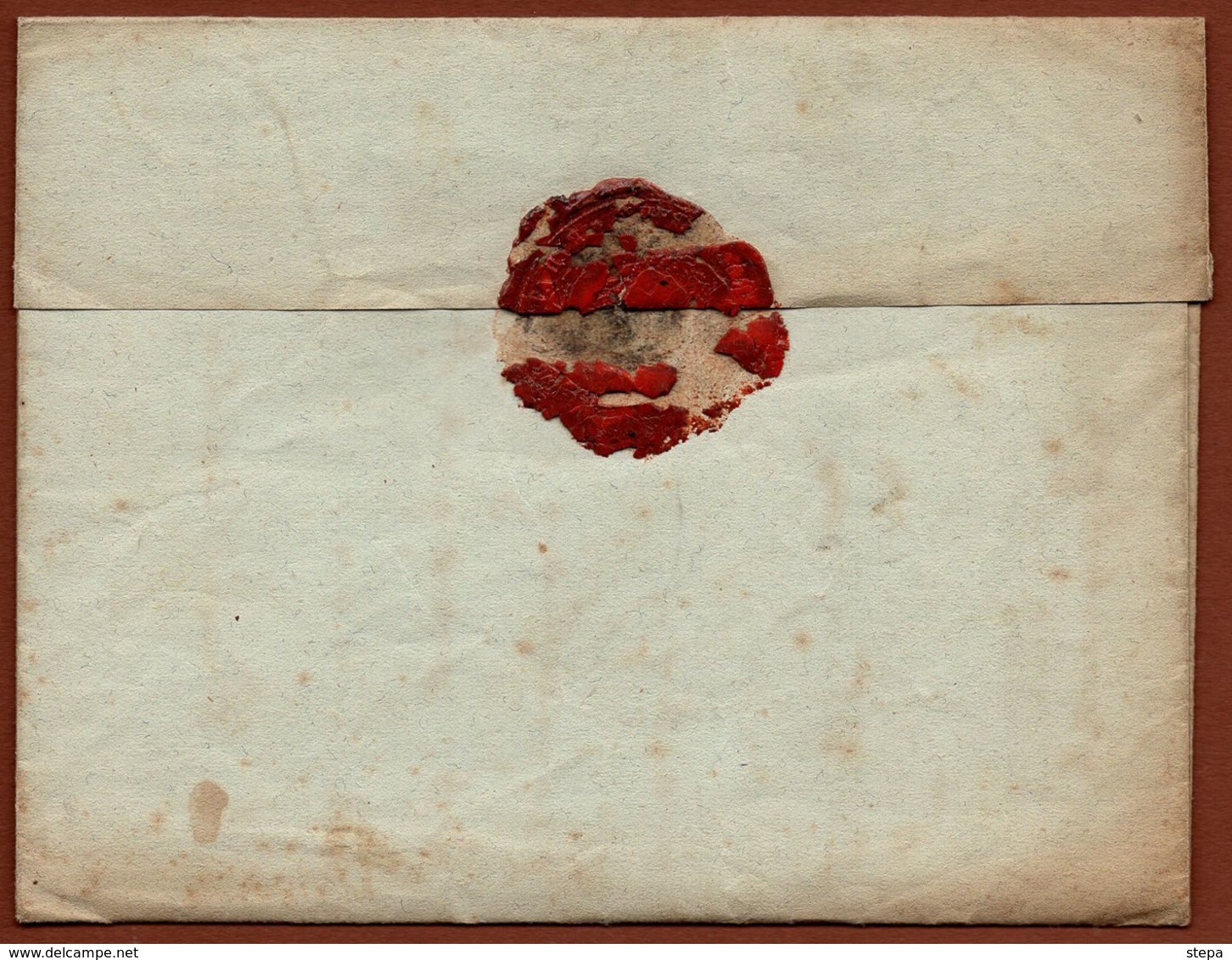
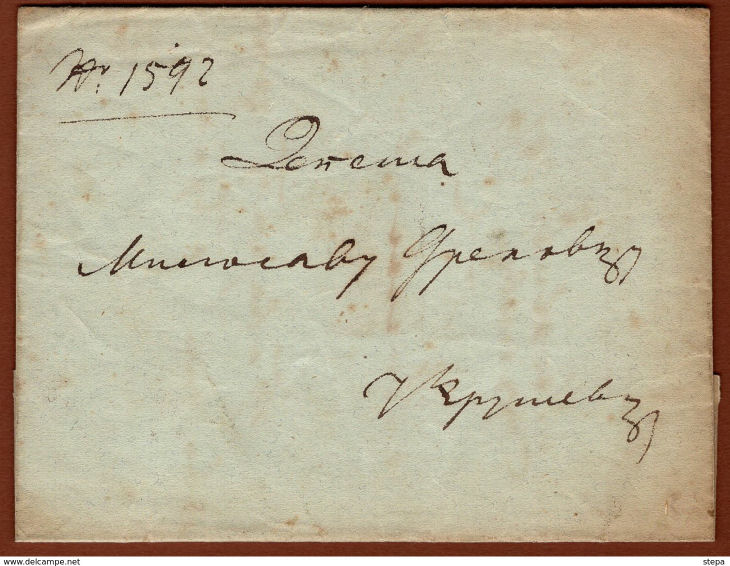
This is a later one of 1870 courtesy of Zoran, Stepa on Delcampe
The coat of arms is now much smaller, "O∂ъ" has become "Oдъ", and 'ТЕЛЕГРАФСКА ДЕПЕША' is now plain text, but still dots over the '1's.
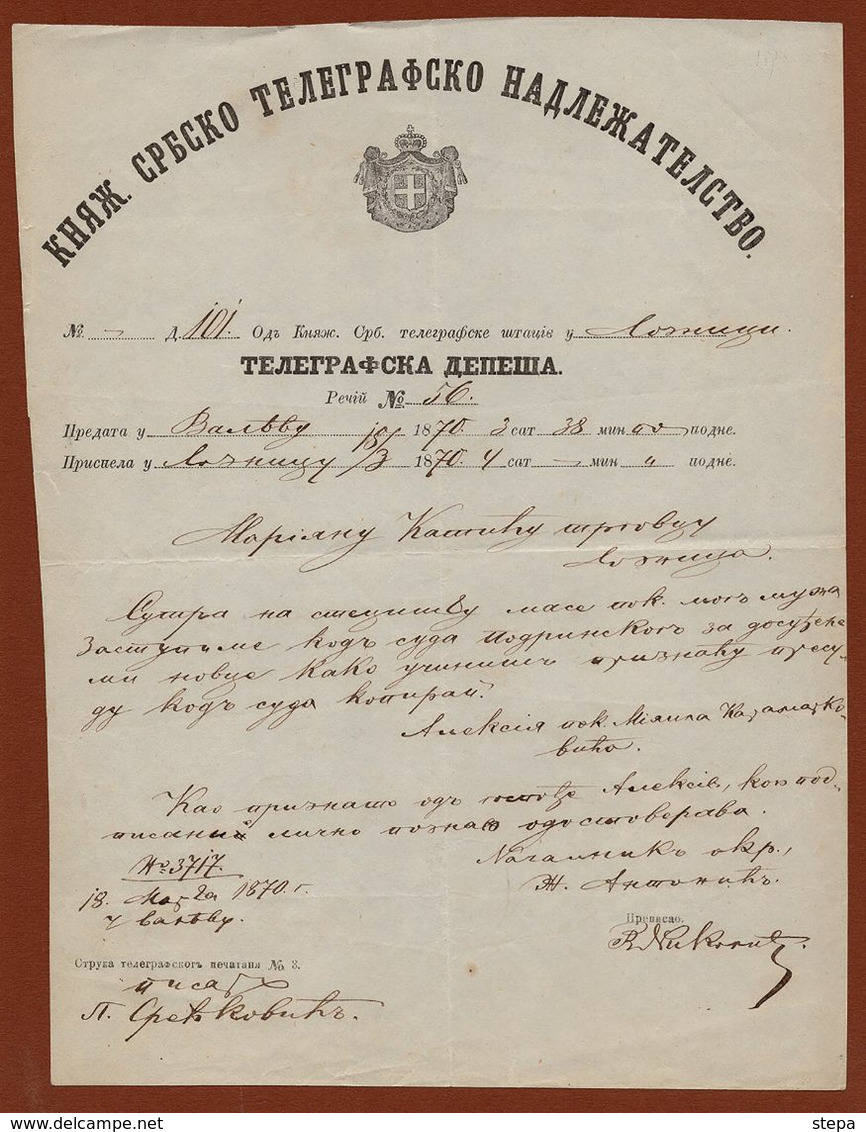
This is a later one of 1873 courtesy of Zoran, Stepa on Delcampe. This appears to be the same. as the 1870 example.
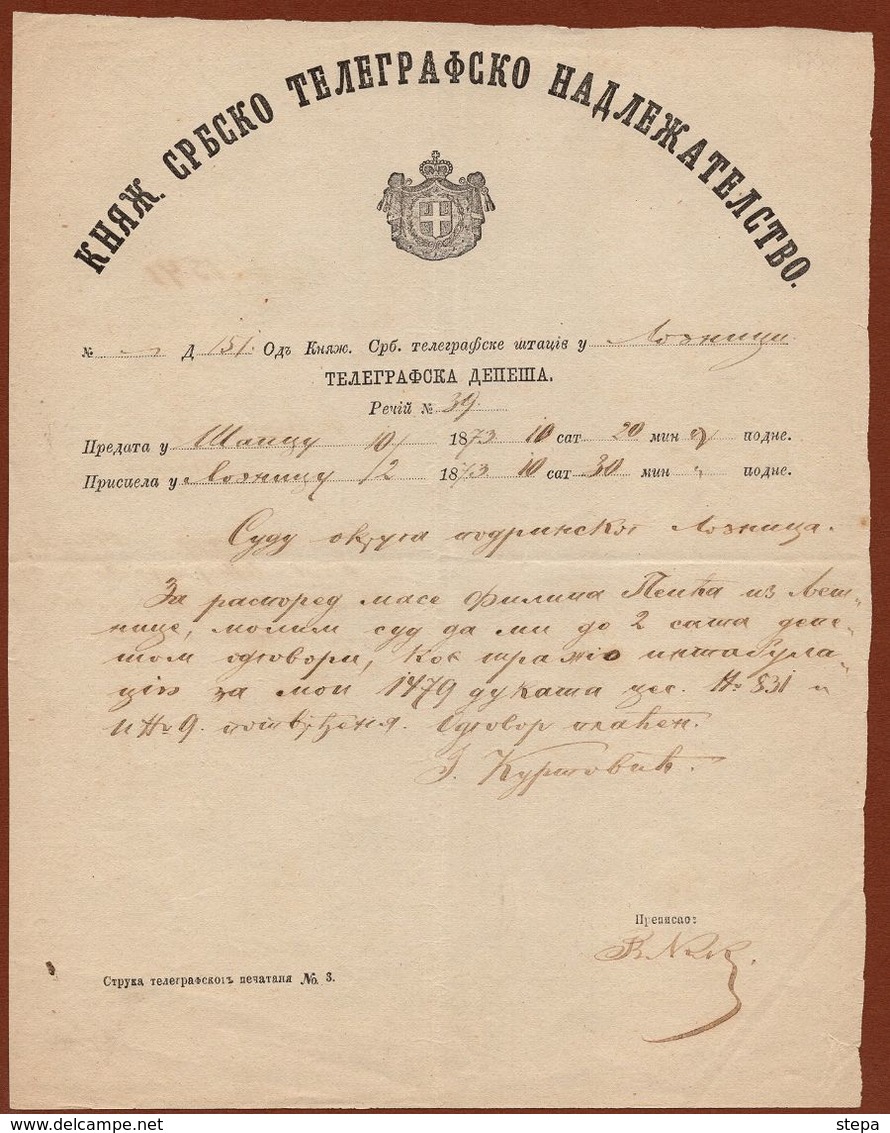
This is a later one of 1875 courtesy of Zoran, Stepa on Delcampe. This again appears to be the same. as the 1870 example.
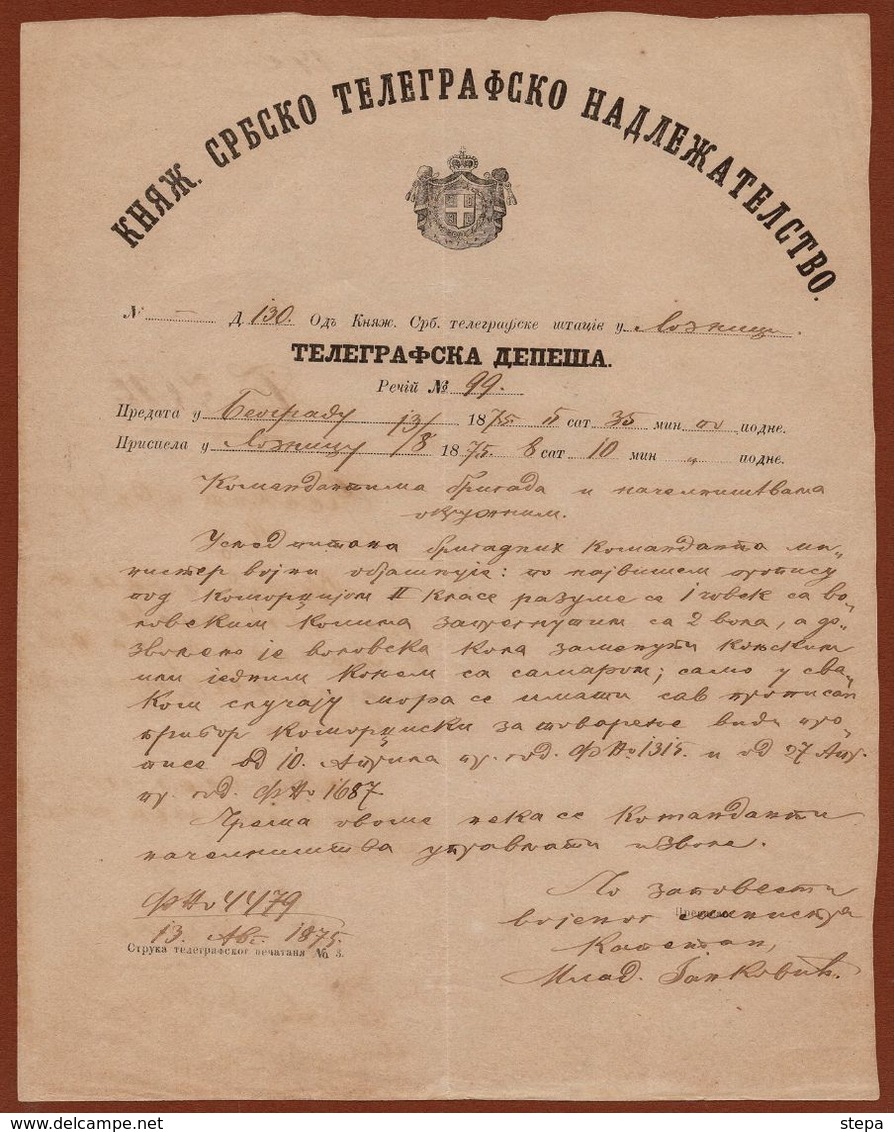
I have no example images from between 1875 when Serbia was a Principality, to the 1894 example below when it was a Kingdom.
Can anyone help to fill the gap ?
This is headed КРАЉ.СРП. УПРАВА ПОШТА И ТЕЛЕГРАФА (КРАЉ.СРП. is an abbreviation of КРАЉЕВСКО СРПСКИ, so this is ROYAL SERBIAN MANAGEMENT POST AND TELEGRAPH.)
Underneath that is simply ТЕЛЕГРАM (Telegram). It is dated March 1894.
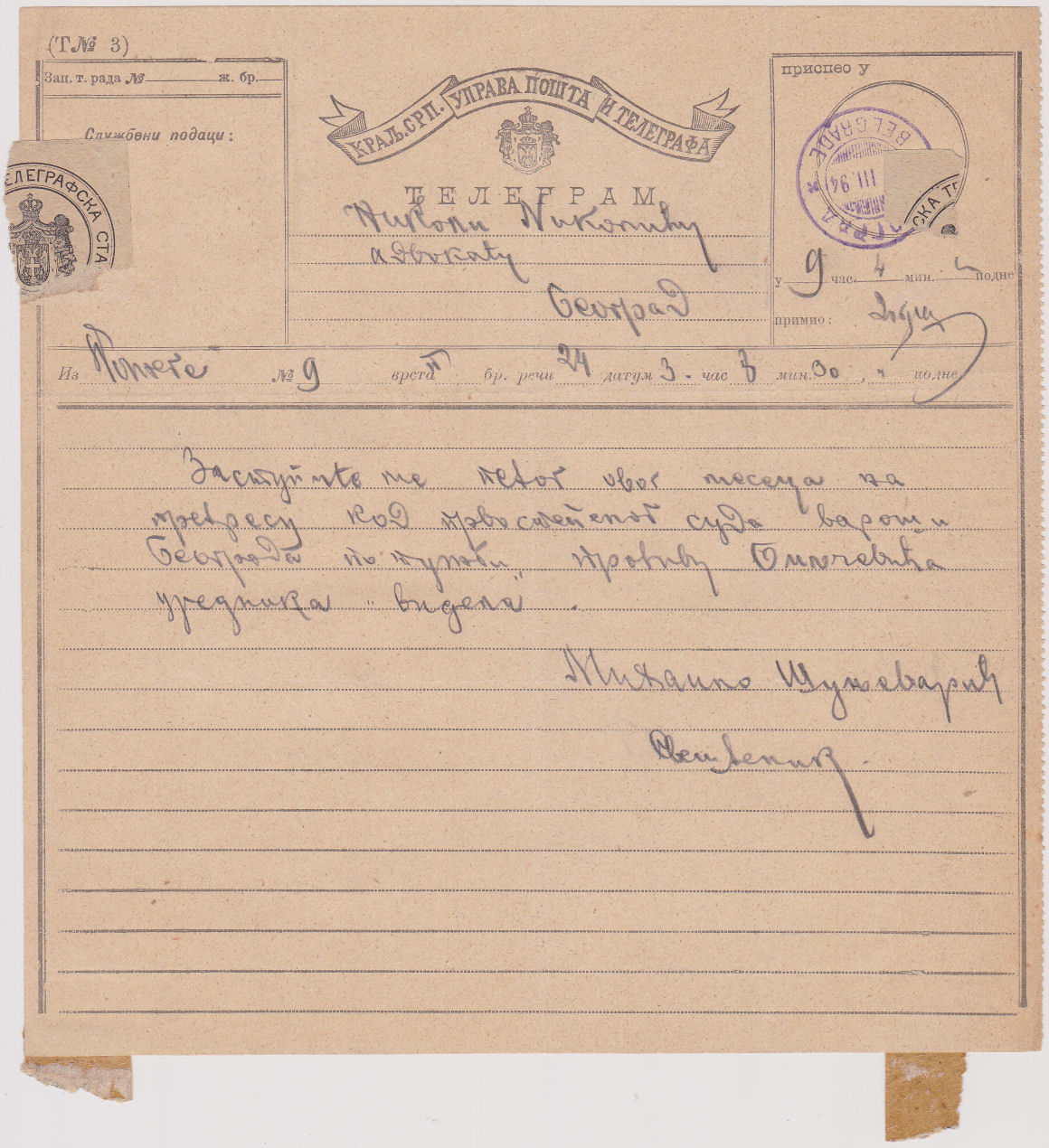
This was clearly sealed with Type #1 shown above.
This is quite similar to the last, but has a wider central section at the top and is a little longer. It is dated 22 October 1898.
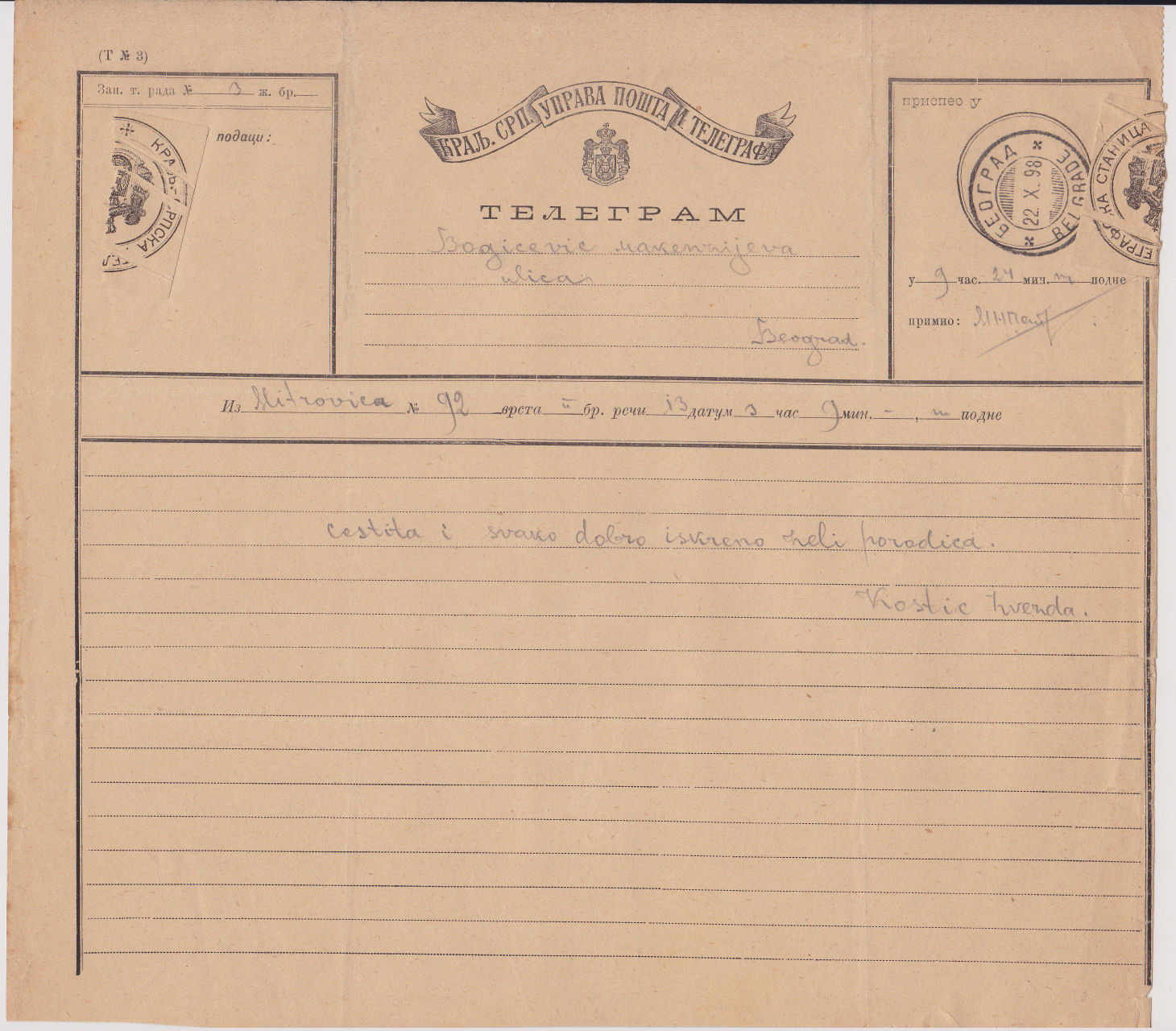
This was again sealed with Type #1 shown above.
This is completely re-designed. It is dated 10 July 1911.
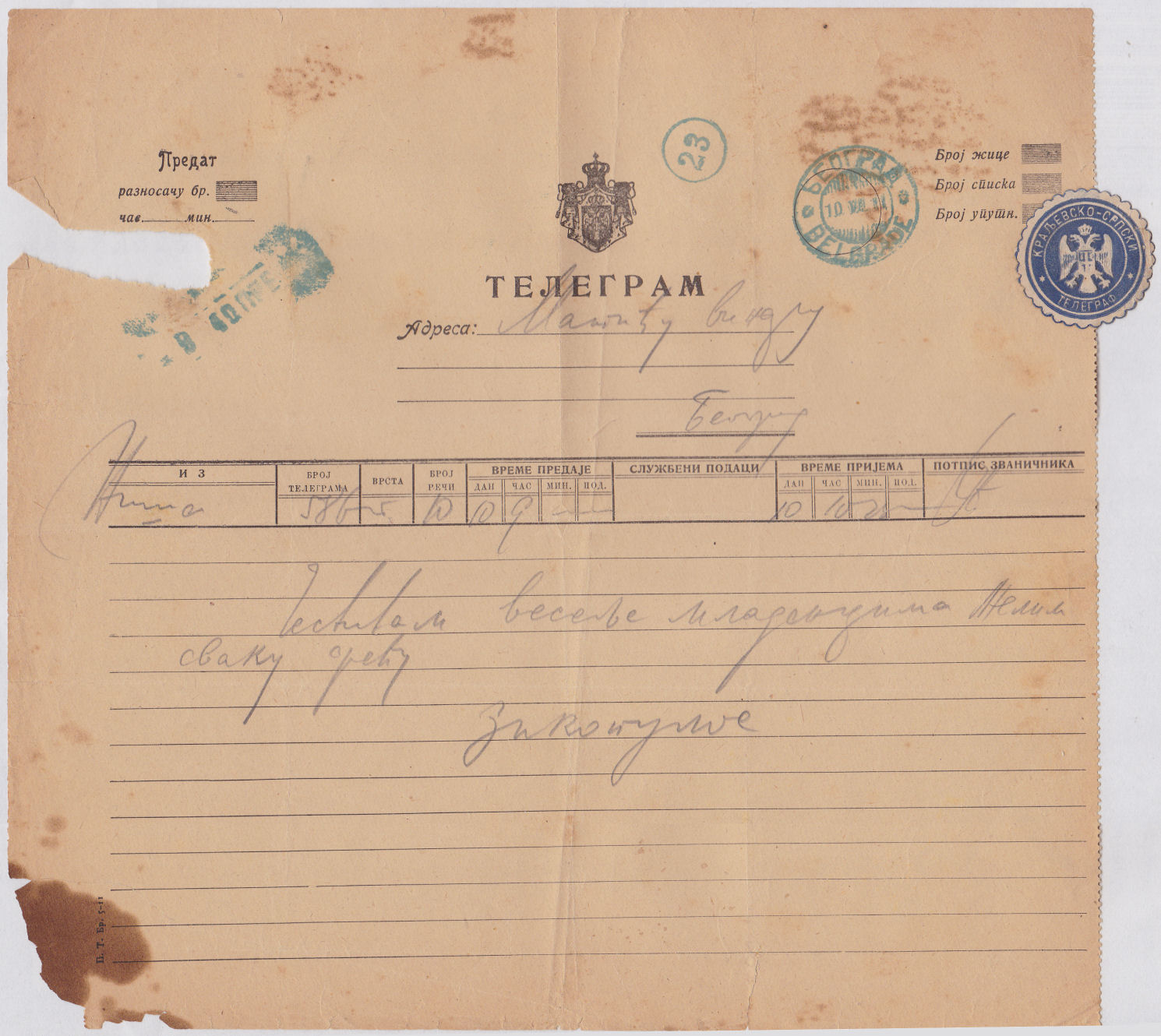
This was sealed with Type #4 shown above.
Again a complete re-design.
If anyone can provide scans to help with this, I am happy to give appropriate credit.


